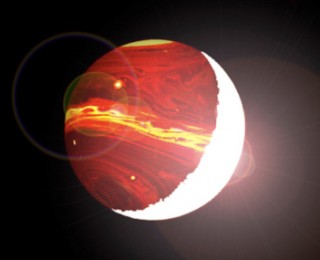
The Next Transit Hunters
The exoplanet hunt is on. The stakes are high. What will our next-generation telescopes find?

The exoplanet hunt is on. The stakes are high. What will our next-generation telescopes find?

Astronomers don’t stop after discovering planets in systems near and far from our own solar system. The next big step is to characterize the planets. We want to understand what they’re made of, what their atmospheres look like, whether they have clouds, how massive they are, how old they are, etc. As it turns out characterizing exoplanets is really, really challenging for both observers and modelers. The challenges encountered are well illustrated by the saga of WASP-12b.

Astronomers have started trying to understand how to organize classes of exoplanets based on their physical characteristics. As it has turned out over the last ten years, exoplanets are considerably more complicated to classify than stars. The evolution of star is based (almost) exclusively on how massive it is at birth. Instead, this paper classifies hot exoplanets by their level of irradiation from their host star and their chemical composition.